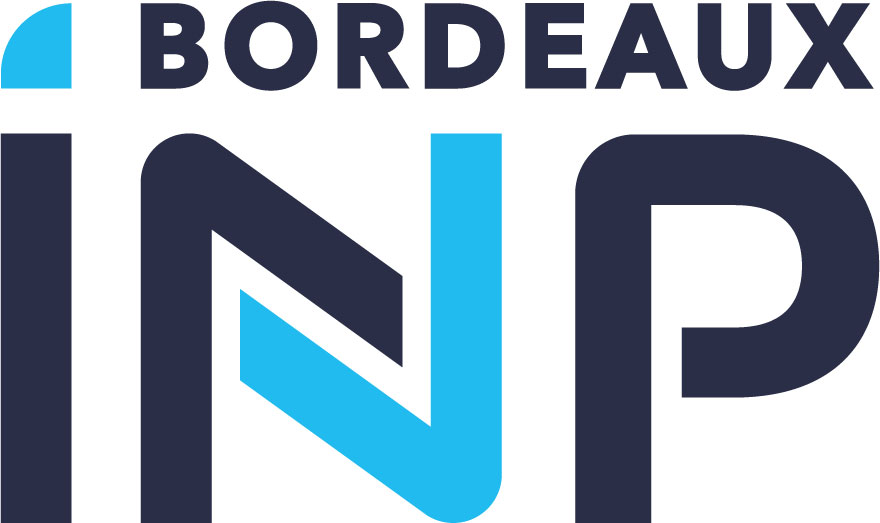IMB > Recherche > Séminaires
Le 20 novembre 2017
à 15:15
Groupe de Travail Intération fluide-solide
Salle 2
Krisztian Benyo
Interaction vague-structure pour des modèles d'ondes longues en présence d'un objet en translation au fond
Dans cet exposé, nous présentons de nouveaux résultats concernant un problème d'interaction fluide-structure. Nous considérons le problème de Cauchy pour l'équation des vagues dans le cas où le domaine occupé par le fluide est à surface libre et avec un fond plat sur lequel un objet solide se translate horizontalement sous l'effet de la force de pression du fluide. Nous examinons deux systèmes asymptotiques décrivant le cas d'un fluide parfait incompressible en faible profondeur correspondant aux équations de Saint-Venant et de Boussinesq. Nous décrivons le système couplé dans ces deux régimes asymptotiques afin d'établir des résultats d'existence et d'unicité pour des données régulières (au sens de Sobolev). Afin de déterminer le mouvement du solide, une analyse précise des termes asymptotiquement singuliers induits par les forces de frottements est nécessaire.
Le 27 novembre 2017
à 10:00
Groupe de Travail Intération fluide-solide
Salle 2
Tobias Haas
Modulation equations at the Eckhaus boundary - The KdV equation
We are interested in the description of small modulations in time and space of wave-train solutions of the complex Ginzburg-Landau equation $dt A = (1 + i alpha)dx2 A+A + A - (1 + ibeta)A |A|^2$ near the Eckhaus boundary. Depending on the parameters , a number of modulation equations, such as the KdV equation or generalized Ginzburg-Landau equation systems can be derived (cf. A. van Harten 1995). In this talk I'm going to prove some error estimates showing that the KdV approximation makes correct predictions in a certain parameter regime. Joint work with Bjorn de Rijk, Guido Schneider.
Le 15 janvier 2018
à 15:15
Groupe de Travail Intération fluide-solide
Salle 2
Debayan Maity
Mathematical Analysis of the Motion of a Rigid Body in a Compressible Navier-Stokes-Fourier Fluid
We consider an initial and boundary value problem modelling the motion of a rigid body in a heat conducting gas. The solid is supposed to be a perfect thermal insulator. The gas is described by the compressible Navier-Stokes-Fourier equations, whereas the motion of the solid is governed by Newton's laws. The main results assert the existence of strong solutions, in an $L^p$-$L^q$ setting, both locally in time and globally in time for small data.
Le 12 février 2018
à 15:15
Groupe de Travail Intération fluide-solide
Salle 2
Jorge San Martin
Modélisation et analyse d'un objet flottant dans un fluide peu profond avec viscosité
Le 8 mars 2018
à 10:00
Groupe de Travail Intération fluide-solide
Salle 2
Jozsef Kolumban
Contrôle à distance du mouvement d'un corps rigide dans un fluide incompressible visqueux bidimensionnel
On considère le mouvement d'un corps rigide dans un fluide visqueux incompressible à deux dimensions avec des conditions de Navier à la frontière du solide. Le système fluide-solide occupe tout le plan. On prouve la contrôlabilité exacte de la position et la vitesse du solide lorsque le contrôle prend la forme d'une force distribuée supportée dans un sous-ensemble compact (avec intérieur non-vide) du domaine du fluide, loin du corps. La stratégie repose sur l'introduction d'un petit paramètre: on considère des contrôles d'amplitude rapides et forts pour lequel le système "Navier-Stokes + corps rigide" se comporte comme une perturbation du système "Euler + corps rigide". En effet, la principale différence entre les deux systèmes est en raison de l'apparition d'une couche limite dans une région du fluide près du solide. Avec un développement asymptotique multi-échelle, on construit une solution contrôlée au système "Navier-Stokes + corps rigide" grâce à certains solutions contrôlées aux systèmes de type "Euler + corps rigide" et à une analyse détaillée de l'influence de la couche limite sur le mouvement du solide.
Le 8 mars 2018
à 11:00
Groupe de Travail Intération fluide-solide
Salle 2
Tatsuo Iguchi
Initial value problem to a shallow water model with a floating solid body
In this talk we are concerned with the well-posedness of the initial value problem to a shallow water model for two-dimensional water waves with a floating solid body. We consider three cases: the body is fixed, the motion of the body is prescribed, and the body moves freely according to Newton's laws. The difficulty of the analysis comes from the fact that we have to treat the contact points, where the water, the air, and the solid body meet. This model yields a new type of free boundary problems for a quasilinear hyperbolic system. We will report that the initial value problem to this model is in fact well-posed. This result is based on the joint research with David Lannes at University of Bordeaux.
Le 10 septembre 2018
à 15:15
Groupe de Travail Intération fluide-solide
Salle 2
Edoardo Bocchi
Floating structures in axisymmetric shallow water: local well-posedness and decay test
The floating structure problem describes the interaction between surface water waves and a floating body, generally a boat or a wave energy converter. As shown by Lannes the equations for the fluid motion can be reduced to a set of two evolution equations on the surface elevation and the horizontal discharge. The presence of the object is accounted for by a constraint on the discharge under the object; the pressure exerted by the fluid on this object is then the Lagrange multiplier associated with this constraint. Our goal is to prove the well-posedness of this fluid-structure interaction problem in the shallow water approximation under the assumption that the flow is axisymmetric without swirl. We write the fluid equations as a quasilinear hyperbolic mixed initial boundary value problem and the solid equation as a second order ODE coupled to the fluid equations. We prove the local in time well-posedness for this coupled problem, provided some compatibility conditions on the initial data are satisfied. Finally we consider the decay test.
Le 10 septembre 2018
à 16:15
Groupe de Travail Intération fluide-solide
Salle de Conférences
Marco Bravin
On uniqueness for weak solutions of a "fluid+rigid body" interaction problem
In this talk I will present a uniqueness result for weak solutions of a "viscous incompressible fluid + rigid body" system with Navier slip-with-friction conditions in a 2D bounded domain. In particular the talk will focus on two tools that are fundamental in the proof. The first one is a way to smooth in time solution of a fluid interaction problem, the second is the R-sectorialy property, which is closed related to maximal regularity in UMD Banach spaces.
Le 9 mars 2021
à 14:00
Groupe de Travail Intération fluide-solide
Salle de Conférences
Clair Poignard
Quelques problèmes d'EDP issus de la modélisation en biologie
Dans cet exposé (informel) je présenterai différents problèmes d'EDP issus de la modélisation en biologie. L'objectif est de susciter des collaborations au sein de l'équipe EDP autour de ces thématiques. J'axerai mon exposé autour de 3 applications : la migration cellulaire, l'électroporation et la croissance tumorale. Pour chaque axe je présenterai (brièvement) ce qui a été fait et j'insisterai plus sur ce qui reste à faire. A la fin de l'exposé l'idée serait d'identifier des points spécifiques qui pourraient être approfondis dans les séances suivantes.
Le 23 octobre 2023
à 14:00
Groupe de Travail Intération fluide-solide
Salle de conférence
Ayman Said Cambridge
Local well-posedness and singularity formation beyond the Yudovich class.
In this talk, I will present recent results obtained in collaboration with Tarek M. Elgindi and
Ryan M. Murray. We give a new supercritical class of data for the 2D Euler equation that
allows for unbounded vorticities well beyond the Yudovich class. Within this class, we can
demonstrate local existence and uniqueness of the solutions. Furthermore, we construct data
for which a finite-time blow-up occurs.
Le 23 octobre 2023
à 16:15
Groupe de Travail Intération fluide-solide
Salle de conférence
Ludovic Godard-Cadillac IMB
Existence and uniqueness for the SQG vortex-wave system when the vorticity in constant near the point-vortex
We study the vortex-wave system for the general surface quasi-geostrophic equations. We establish glocal existence and uniqueness for strong solutions and give a criterion for blow-up. This relies on fine estimates on the commutator structure of the equation and on the behavior of the point-vortex if it collapses with the boundary of the constant part of the vorticity where it lays initially. In a second part of this work, we investigate the question of global existence of weak solutions. In the critical case, we need to introduce a weaker notion of solution to give a meaning to the manipulated quantities and conclude.
Groupe de Travail Intéraction fluide-solide
Ryan M. Murray. We give a new supercritical class of data for the 2D Euler equation that
allows for unbounded vorticities well beyond the Yudovich class. Within this class, we can
demonstrate local existence and uniqueness of the solutions. Furthermore, we construct data
for which a finite-time blow-up occurs.



